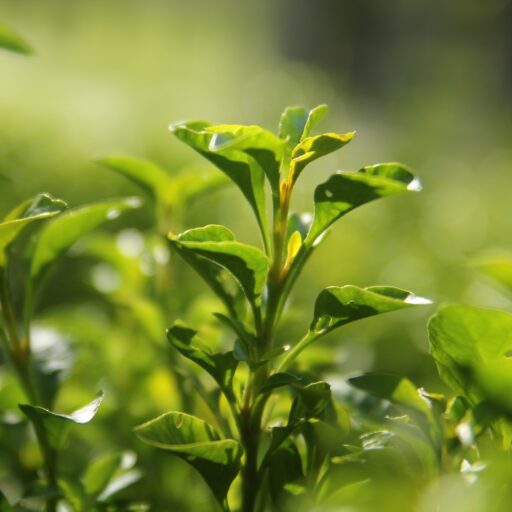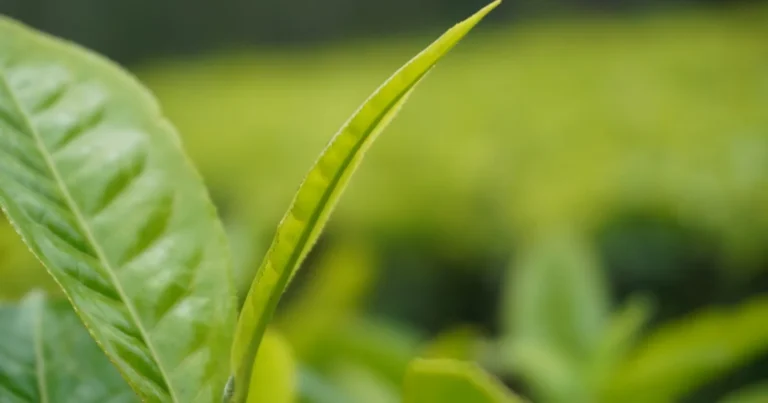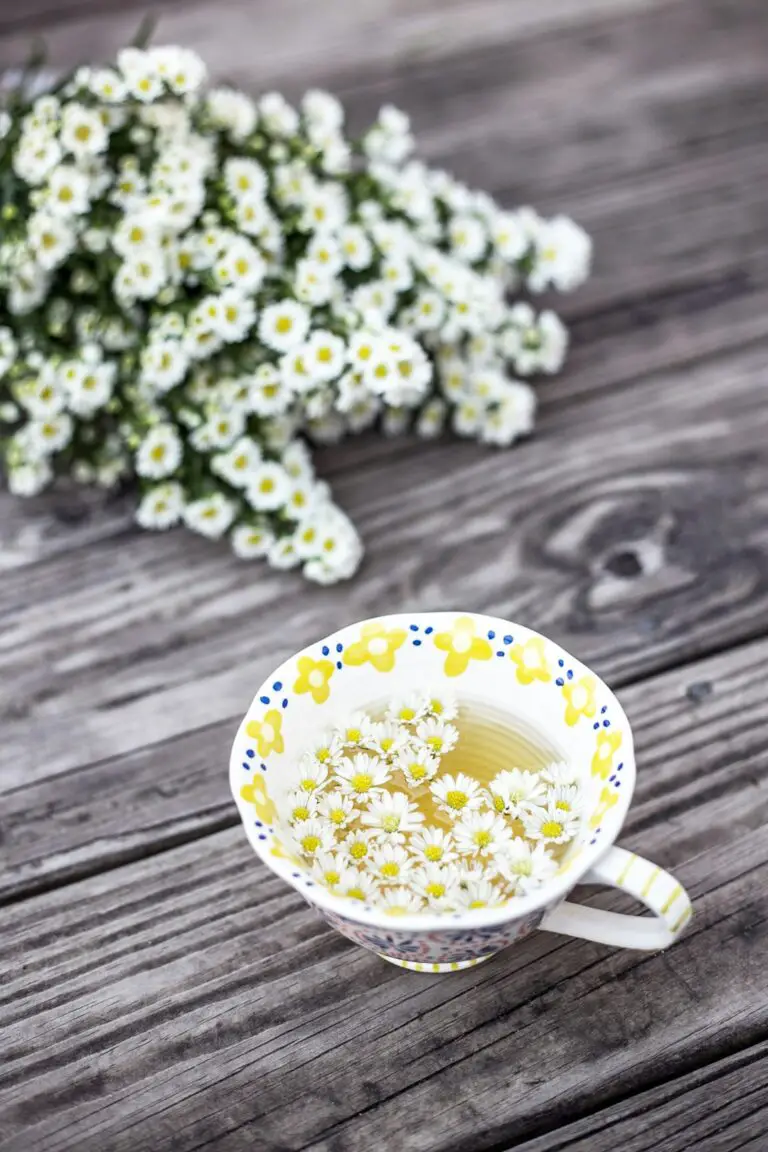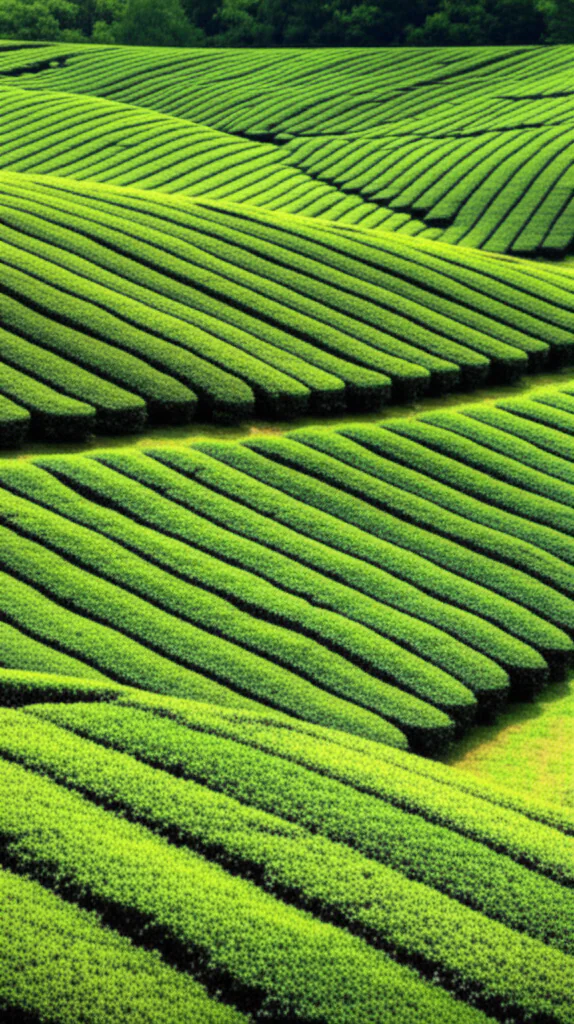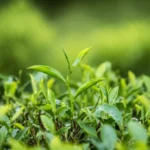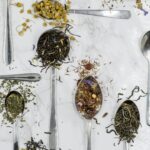Support our educational content for free when you purchase through links on our site. Learn more
Can Tea Plants Thrive Indoors in Pots? 7 Expert Tips 🍃 (2025)
Ever wondered if you could grow your own tea plant right on your windowsill? Spoiler alert: you absolutely can! At Growing Teas™, we’ve turned countless indoor spaces into thriving mini tea gardens, and we’re here to spill the leaves on how you can do it too. From choosing the perfect pot and soil to mastering watering and light, this guide covers everything you need to know to cultivate your own Camellia sinensis indoors.
Did you know that all true teas—green, black, white, and oolong—come from the same plant? Growing it indoors means you’re not just nurturing a houseplant; you’re cultivating a centuries-old tradition in your own home. Curious about how to harvest and even process your leaves into a fresh cup of tea? Stick around—we’ll walk you through that magical moment too!
Key Takeaways
- Tea plants can thrive indoors with the right light, humidity, and acidic soil conditions.
- Choose compact varieties like Camellia sinensis var. sinensis for easier container growing.
- Water thoroughly but infrequently; avoid overwatering to prevent root rot.
- Use grow lights if natural sunlight is limited to provide 4-6 hours of bright, indirect light daily.
- Regular pruning and fertilizing keep your tea plant healthy and productive.
- Harvest the prized “two leaves and a bud” for the best tea flavor and learn simple home processing techniques.
Ready to start your indoor tea garden? Check out these essentials:
- Espoma Organic Potting Mix for Acid-Loving Plants
- Hydrofarm Agrobrite Desktop Plant Light
- Felco F-310 Pruning Snips
Dive in and transform your space into a lush tea oasis! 🍵
Table of Contents
- ⚡️ Quick Tips and Facts About Growing Tea Plants Indoors
- 🌱 Tea Plant Origins and Why Indoor Cultivation Is a Game Changer
- 🌞 Understanding Light Requirements for Indoor Tea Plants
- 💧 Mastering Watering and Humidity for Potted Tea Plants
- 🌿 Soil and Container Choices: The Foundation for Thriving Indoor Tea Plants
- 🌡️ Temperature and Climate Control Tips for Indoor Tea Growing
- 🌾 7 Essential Steps to Successfully Grow Tea Plants Indoors in Pots
- 🌿 Best Tea Plant Varieties for Indoor Container Gardening
- 🌱 Propagation Techniques: How to Start Your Indoor Tea Plant from Seed or Cuttings
- 🌼 Fertilizing Your Indoor Tea Plants: What Works and What Doesn’t
- ✂️ Pruning and Maintenance Tips to Keep Your Indoor Tea Plant Happy
- 🐞 Pest and Disease Management for Indoor Tea Plants
- 🍵 Harvesting and Processing Leaves from Your Indoor Tea Plant
- 🌿 Troubleshooting Common Problems When Growing Tea Plants Indoors
- 🛒 Where to Buy Quality Tea Plants and Supplies for Indoor Growing
- 🧪 Experimenting with Hydroponics and Other Innovative Indoor Tea Growing Methods
- 📖 Reader Stories and Questions About Growing Tea Indoors
- 🎯 Conclusion: Is Growing Tea Plants Indoors in Pots Worth It?
- 🔗 Recommended Links for Tea Plant Enthusiasts
- ❓ Frequently Asked Questions About Indoor Tea Plant Cultivation
- 📚 Reference Links and Further Reading
Here is the main body of the article, crafted with expertise and a touch of wit from the team at Growing Teas™.
⚡️ Quick Tips and Facts About Growing Tea Plants Indoors
So, you’re thinking of turning your living room into a personal tea estate? Fantastic idea! Before we dive deep, here are some quick sips of wisdom to get you started.
- Yes, You Can! 🎉 You can absolutely grow the true tea plant, Camellia sinensis, indoors in a pot. It’s not just for sprawling plantations in Darjeeling!
- One Plant, Many Teas: All “true” teas (Black, Green, White, Oolong, Pu-erh) come from this one amazing plant. The difference is all in the processing of the leaves after you harvest them.
- Patience is a Virtue: It can take 2-3 years for a new plant to mature enough for a decent harvest. Think of it as a long-term relationship, not a summer fling.
- Acidic Soil is Key: Tea plants are like the rock stars of the plant world—they have specific demands. They crave acidic, well-draining soil (pH 5.5-6.5).
- Light, But Not Too Much: They love bright, indirect sunlight. A scorching afternoon sunbeam will burn their leaves. Think “gentle morning glow,” not “Sahara desert at noon.”
- Humidity is Happiness: These plants hail from humid, subtropical regions. Indoors, you’ll need to mimic this with misting or a pebble tray.
- Don’t Drown It: Overwatering is the #1 killer of potted tea plants. Let the top inch of soil dry out before you water again.
🌱 Tea Plant Origins and Why Indoor Cultivation Is a Game Changer
Let’s hop in our time-traveling teapot and zip back a few thousand years. The tea plant, Camellia sinensis, is native to the misty mountains and lush valleys of Southeast Asia, specifically regions in modern-day China, India, and Myanmar. For centuries, the idea of cultivating this plant outside of its specific outdoor climate was, well, unthinkable. You can learn more about the fascinating journey of this plant in our History of Tea section.
So, you might be wondering, how hard is tea to grow? Traditionally, it required very specific conditions: high altitudes, ample rainfall, and distinct seasons. But here’s the magic of modern horticulture: containers change everything!
Bringing a tea plant indoors is like inviting a piece of ancient history into your home. It frees the plant from geographical and climatic constraints. Suddenly, a tea lover in a snowy Minnesota apartment or a sun-drenched Arizona condo can experience the joy of plucking their own tea leaves. It’s a revolution in a pot! You’re not just growing a houseplant; you’re cultivating a beverage, a tradition, and a conversation starter.
🌞 Understanding Light Requirements for Indoor Tea Plants
Tea plants are a bit like Goldilocks when it comes to sunlight. Too little, and they get weak and “leggy.” Too much, and their leaves get scorched and bitter. You need it just right.
Finding the Sweet Spot
- Ideal Scenario: Aim for 4-6 hours of bright, indirect sunlight per day. An east-facing window is often perfect, as it gets the gentle morning sun. A south- or west-facing window can also work, but you might need to pull the plant back a bit or use a sheer curtain to diffuse the intense afternoon light.
- Signs of Trouble:
- ❌ Too Little Light: Long, spindly stems with sparse leaves. The plant will look like it’s stretching desperately towards the window.
- ❌ Too Much Light: Yellowing leaves or brown, crispy edges and spots. This is plant sunburn!
The Power of Grow Lights
What if your home is more “cozy cave” than “sun-drenched solarium”? Don’t despair! A good grow light is your best friend. As the experts at Savvy Gardening note for indoor mint, insufficient light is a common problem that a grow light can easily solve.
We’ve had great success using full-spectrum LED or fluorescent lights. You don’t need a high-tech hydroponics setup (though we’ll get to that later!). A simple desktop lamp can be enough for a single plant.
- Our Go-To: The Hydrofarm Agrobrite Desktop Plant Light is a fantastic, no-fuss option for beginners. It provides the right spectrum of light without taking up much space.
- How to Use: Position the light about 6-12 inches above the plant and leave it on for 10-12 hours a day. Use a simple outlet timer to automate it.
💧 Mastering Watering and Humidity for Potted Tea Plants
If there’s one area where new indoor tea growers stumble, it’s watering. It’s a delicate dance between “parched” and “drowned.” Let’s get the steps right.
The Golden Rule of Watering
Water thoroughly, but infrequently. This means when you do water, drench the soil until water runs freely from the drainage holes. This ensures the entire root ball gets hydrated and flushes out any salt buildup from fertilizers. Then, and this is the crucial part, let the top 1-2 inches of soil dry out completely before you water again.
How to check? The classic finger test never fails. Stick your index finger into the soil up to the second knuckle. If it feels dry, it’s time to water. If it’s damp, wait another day or two.
| Watering Do’s and Don’ts | ✅ Do | ❌ Don’t |
|---|---|---|
| Frequency | Water only when the topsoil is dry. | Water on a rigid schedule (e.g., “every Monday”). |
| Technique | Water until it drains from the bottom. | Give it tiny, frequent sips of water. |
| Water Type | Use filtered or rainwater if possible. | Use heavily chlorinated tap water consistently. |
| Pot Choice | Ensure your pot has excellent drainage holes. | Use a decorative pot with no drainage. |
Creating a Humid Haven
Remember those misty mountains? Your tea plant does. Indoor air, especially with heating or AC, is desert-dry compared to its native habitat. Low humidity can lead to brown, crispy leaf tips.
Here are three easy ways to boost humidity:
- Misting: Lightly mist the leaves with a spray bottle every couple of days. It’s a mini-spa treatment for your plant.
- Pebble Tray: This is our favorite method. Place the pot on a tray filled with pebbles and water. The water will evaporate, creating a lovely humid microclimate around the plant. Just make sure the bottom of the pot isn’t sitting in the water, as this can cause root rot.
- Grouping Plants: Plants naturally release moisture through transpiration. Grouping your tea plant with other houseplants creates a small, humid jungle.
🌿 Soil and Container Choices: The Foundation for Thriving Indoor Tea Plants
You wouldn’t build a house on a shoddy foundation, right? The same goes for your tea plant. The right pot and soil are non-negotiable for success. This is a key principle for all container gardening, as highlighted by the folks at Swansons Nursery, who emphasize that “The right container is key.”
The Perfect Potting Mix
Camellia sinensis is an “ericaceous” plant, meaning it demands acidic soil. Think of it as the plant version of someone who only drinks artisanal coffee. Using standard potting soil or, even worse, garden soil, is a recipe for disaster. Garden soil compacts, suffocates roots, and has the wrong pH.
Your ideal tea plant soil should be:
- Acidic: pH between 5.5 and 6.5.
- Well-Draining: To prevent waterlogging and root rot.
- Rich in Organic Matter: To provide essential nutrients.
You can buy a pre-made acidic mix (often labeled for azaleas, rhododendrons, or camellias) or create your own.
DIY Tea Plant Soil Recipe:
- 1 part high-quality potting mix (like Espoma AP8 Organic Potting Mix)
- 1 part peat moss or coco coir (for acidity and moisture retention)
- 1 part perlite or coarse sand (for drainage)
Choosing the Right Container
When it comes to pots, drainage is king. No drainage hole = a certain death sentence.
- ✅ Good Choices: Terracotta, unglazed ceramic, fabric grow bags, or high-quality plastic pots. Terracotta is porous and helps the soil breathe, but it also dries out faster, so you’ll need to water more often. Fabric pots like VIVOSUN’s Grow Bags are fantastic for aeration.
- ❌ Bad Choices: Any decorative pot without a drainage hole. If you fall in love with one, use it as a “cachepot”—a decorative outer pot—and keep your plant in a functional nursery pot with drainage inside it.
Size Matters: Start with a pot that’s about 2 inches wider in diameter than the plant’s current root ball. A pot that’s too large holds excess moisture and can lead to root rot. Plan to repot your tea plant into a slightly larger container every 2-3 years.
🌡️ Temperature and Climate Control Tips for Indoor Tea Growing
Good news! Tea plants enjoy the same temperatures that most humans do. They thrive in a range of 65-80°F (18-27°C). If you’re comfortable, your tea plant is likely comfortable too.
However, they are sensitive to sudden, drastic changes.
- Avoid Drafts: Keep your plant away from drafty windows, doors, and heating/AC vents. A sudden blast of hot or cold air can stress the plant and cause it to drop leaves.
- Winter Care: Tea plants can tolerate cooler temperatures down to about 50°F (10°C), which can actually help stimulate flowering. However, they are not frost-tolerant. If you move your potted plant outdoors for the summer, be sure to bring it back inside well before the first frost. This aligns with advice for other tender plants like chamomile, which, as Gardenary points out, can survive a light frost but not a heavy freeze.
🌾 7 Essential Steps to Successfully Grow Tea Plants Indoors in Pots
Ready to get your hands dirty? Here’s our step-by-step guide to potting your very own tea plant.
- Source Your Plant: You can start from seed or a cutting (more on that below), but the easiest way is to buy a small starter plant. We’ll list some great sources in our “Where to Buy” section. Look for a plant with healthy, green leaves and no signs of pests.
- Choose Your Pot: Select a container with excellent drainage that is 1-2 inches larger than the nursery pot it came in.
- Prepare Your Soil: Mix your acidic, well-draining soil or use a quality pre-made blend for acid-loving plants. Pre-moisten the soil so it’s damp but not soggy.
- Potting the Plant: Add a layer of your soil mix to the bottom of the new pot. Gently remove the tea plant from its nursery container, teasing the roots slightly if they are tightly bound. Place it in the new pot, ensuring the top of the root ball is about an inch below the rim.
- Fill and Settle: Fill in the sides with your soil mix, gently pressing it down to remove air pockets. Don’t compact it too tightly!
- Water Thoroughly: Give your newly potted plant a deep drink of water until it flows from the drainage holes. This helps the soil settle around the roots.
- Find the Perfect Spot: Place your plant in its new home—a location with 4-6 hours of bright, indirect light. Now, the journey begins!
🌿 Best Tea Plant Varieties for Indoor Container Gardening
While all true tea comes from Camellia sinensis, there are two main varieties, and some cultivars are better suited for indoor life than others.
- Camellia sinensis var. sinensis: This is the Chinese variety. It’s a smaller, more compact shrub with smaller leaves. It’s more tolerant of cooler temperatures and is generally the best choice for indoor container growing. It’s naturally more manageable in size.
- Camellia sinensis var. assamica: This is the Assam or Indian variety. It grows into a larger tree with bigger leaves and prefers hotter, wetter climates. While you can grow it in a pot, it will require more aggressive pruning to keep it a manageable size.
Recommended Cultivars for Indoors:
- ‘Small Leaf Tea’: As the name suggests, this is a compact variety perfect for pots.
- ‘Red Leaf Tea’: A beautiful cultivar with reddish new growth, adding ornamental value.
- ‘Blushing Maiden’: Known for its lovely pink-tinged new leaves.
🌱 Propagation Techniques: How to Start Your Indoor Tea Plant from Seed or Cuttings
Feeling adventurous? Propagating your own tea plant is incredibly rewarding.
Growing from Seed
- The Challenge: Tea seeds have a notoriously short viability. You must use fresh seeds. They also require a period of cold stratification to germinate.
- The Process:
- Soak fresh seeds in warm water for 24-48 hours.
- Place them in a bag with moist sand or peat moss and refrigerate for 6-8 weeks.
- Plant the seeds about an inch deep in your acidic soil mix.
- Keep the soil moist and warm. Germination can take 1-3 months, so be patient!
Growing from Cuttings (Our Recommended Method)
This is faster and easier than starting from seed. You’ll get a genetic clone of the parent plant.
- Take a Cutting: In late spring or summer, take a 4-6 inch cutting of semi-hardwood (wood that is firm but still flexible). Make the cut just below a leaf node.
- Prepare the Cutting: Remove the lower leaves, leaving just 2-3 leaves at the top. If the remaining leaves are large, you can cut them in half horizontally to reduce moisture loss.
- Rooting Hormone: Dip the cut end in a rooting hormone like Bonide Bontone II Rooting Powder. This isn’t strictly necessary, but it significantly increases your success rate.
- Plant It: Insert the cutting into a small pot of moist, sterile potting mix.
- Create a Greenhouse: Cover the pot with a clear plastic bag or cloche to create a humid environment.
- Wait: Place it in bright, indirect light. Roots should form in 2-3 months. You’ll know it’s working when you see new leaf growth.
🌼 Fertilizing Your Indoor Tea Plants: What Works and What Doesn’t
Potted plants are entirely dependent on you for their nutrition. Nutrients in the soil get used up or washed away with watering, so a regular feeding schedule is essential for lush, healthy growth.
Feeding Schedule
- Growing Season (Spring/Summer): Feed your tea plant every 2-4 weeks. This is when it’s actively putting out new growth that you’ll eventually harvest.
- Dormant Season (Fall/Winter): Reduce feeding to once every 6-8 weeks, or stop altogether if the plant isn’t showing any new growth.
What to Use
You need a balanced, acidic fertilizer. Look for one formulated for acid-loving plants like camellias, azaleas, or rhododendrons.
- ✅ Liquid Fertilizers: These are easy to apply and provide nutrients quickly. We’re big fans of Espoma Organic Indoor Plant Food, which is gentle and effective. Always dilute it according to the package instructions—or even a bit weaker—to avoid burning the roots.
- ✅ Slow-Release Granules: Products like Jobe’s Organics Azalea, Camellia & Rhododendron Fertilizer are mixed into the soil and release nutrients over several months. This is a great “set it and forget it” option.
- ❌ Avoid: High-nitrogen lawn fertilizers or generic “all-purpose” plant foods that may not be acidic enough.
Pro Tip: Never fertilize a dry plant. Water the soil first, then apply the diluted fertilizer. This prevents root burn.
✂️ Pruning and Maintenance Tips to Keep Your Indoor Tea Plant Happy
Pruning isn’t just about harvesting; it’s about maintaining the health, shape, and productivity of your plant. Regular trimming encourages a bushier, fuller plant rather than a tall, gangly one.
The Art of the Snip
- Tools: Use clean, sharp pruning shears or snips. We love our Felco F-310 Picking and Trimming Snips for their precision. Wiping the blades with rubbing alcohol before and after use prevents the spread of disease.
- Technique: To encourage branching, snip stems just above a leaf node (the point where a leaf grows from the stem). This will activate dormant buds at that node, leading to two new branches instead of one.
- Shaping: After the plant is a couple of years old, you can start shaping it. The goal for tea production is to create a flat “plucking table” at a manageable height, which makes harvesting easier and encourages tender new growth. Prune to maintain a height of 2-3 feet.
- Rejuvenation: If your plant becomes leggy or sparse, don’t be afraid to give it a hard prune in the spring, cutting it back by about a third. As one gardener noted in Savvy Gardening about their mint, “I typically cut my plants back all the way to the soil in the mid-spring. This forces the production of all new deep green and flavorful leaves.” While you won’t cut a tea plant all the way back, the principle of a hard prune to rejuvenate growth is the same.
🐞 Pest and Disease Management for Indoor Tea Plants
One of the great health benefits of tea is that the plant itself is naturally quite pest-resistant. However, indoor environments can sometimes invite unwelcome guests.
Common Culprits:
- Spider Mites: These tiny arachnids are the most common indoor pest. You’ll notice fine webbing on the undersides of leaves and a stippled, unhealthy appearance. They thrive in dry conditions.
- Scale: These look like small, brown, immobile bumps on the stems and leaves. They suck the sap from the plant.
- Aphids: Small, soft-bodied insects that cluster on new growth.
Your Battle Plan:
- Inspect Regularly: The best defense is a good offense. Check your plant weekly, especially the undersides of leaves.
- Boost Humidity: Spider mites hate humidity. Regular misting can deter them.
- Manual Removal: For light infestations of scale or aphids, you can wipe them off with a cotton swab dipped in rubbing alcohol or spray them off with a strong jet of water.
- Insecticidal Soap: For more stubborn pests, a horticultural oil or insecticidal soap spray is an effective, organic option. Bonide Insecticidal Soap is a reliable choice. Be sure to coat all surfaces of the plant, including the undersides of leaves.
🍵 Harvesting and Processing Leaves from Your Indoor Tea Plant
This is the moment you’ve been waiting for! After 2-3 years of patient care, your plant is ready for its first harvest. It’s a truly magical experience.
When and What to Pluck
The most prized part of the tea plant is the new growth, known as a “flush.” You’re looking for the classic “two leaves and a bud”—the two youngest, most tender leaves and the unopened leaf bud at the tip of a branch. This is where the finest flavor and aroma are concentrated.
- When: Harvest in the spring and summer when the plant is actively growing.
- How: Gently pluck the flush with your fingers or use small, sharp scissors.
From Leaf to Cup: A Simple Green Tea
Processing tea is an art form, but you can make a simple, delicious pan-fired green tea at home. This is a great entry point into the world of DIY Tea Blending.
- Withering: Spread your freshly plucked leaves on a tray and let them wilt for a few hours until they are soft and pliable.
- Fixing (Kill-Green): Heat a dry skillet or wok over medium-low heat. Add the leaves and stir them constantly for 2-3 minutes. This deactivates the enzymes that cause oxidation (which is what turns green tea into black tea). The leaves should turn a vibrant green and smell grassy.
- Rolling: Take the warm leaves and roll them between your palms to break down the cell walls and release the flavorful juices.
- Drying: Spread the rolled leaves on a baking sheet and dry them in the oven on its lowest setting (around 200°F or 95°C) with the door slightly ajar. Check them every 10-15 minutes until they are completely dry and crispy. This can take about an hour.
- Resting: Let your finished tea rest in an airtight container for at least a week to allow the flavors to mellow.
- Brew and Enjoy! You did it! You’re drinking tea you grew yourself. There’s nothing quite like it.
For a visual guide on the whole process, from growing to harvesting, the video “Grow Your Own Tea Plant | Growing a Container Tea Garden” by The Cottage Peach, which you can find at the top of this article, is incredibly helpful. The creator walks you through her own container tea garden journey.
🌿 Troubleshooting Common Problems When Growing Tea Plants Indoors
Is your plant looking a little under the weather? Don’t panic! Here’s a quick diagnostic chart to help you figure out what’s wrong.
| Symptom | Possible Cause(s) | Solution(s) |
|---|---|---|
| Yellowing Leaves | Overwatering, nutrient deficiency (especially nitrogen), or incorrect soil pH. | Check soil moisture. Let it dry out. Test soil pH and amend if necessary. Fertilize with a balanced, acidic fertilizer. |
| Brown, Crispy Leaf Edges | Low humidity, underwatering, or fertilizer burn. | Increase humidity with a pebble tray or misting. Water more deeply. Flush soil with plain water to remove excess fertilizer salts. |
| Leggy, Spindly Growth | Insufficient light. | Move the plant to a brighter location or supplement with a grow light. |
| Leaf Drop | Sudden change in temperature, light, or watering. Drafts. | Move the plant to a more stable location away from vents and drafts. Maintain a consistent care routine. |
| No New Growth | Dormancy (normal in fall/winter), or lack of nutrients/light. | Be patient during winter. If it’s the growing season, ensure it’s getting enough light and fertilizer. |
| White Powdery Substance on Leaves | Powdery mildew (a fungal disease). | Improve air circulation. Wipe off with a damp cloth. Treat with a fungicide or a mix of neem oil and water. |
🛒 Where to Buy Quality Tea Plants and Supplies for Indoor Growing
Finding a Camellia sinensis plant can be trickier than finding a common houseplant, but they are out there! Here are some places to look for plants and essential supplies.
Tea Plants (Camellia sinensis)
- Logee’s: A fantastic source for rare and tropical plants, they often carry several tea plant cultivars.
- Etsy: A surprising number of small, independent growers sell tea plants and seeds here. Read the reviews carefully!
- Local Nurseries: Call your local, non-big-box nurseries. Sometimes they carry them, especially if they have a good selection of camellias.
👉 Shop for Tea Plants on:
Essential Supplies
- Acidic Potting Mix (for Azaleas/Camellias):
- Acidic Fertilizer:
- Precision Pruning Snips:
🧪 Experimenting with Hydroponics and Other Innovative Indoor Tea Growing Methods
While soil is the traditional medium, can you grow tea hydroponically? The short answer is yes, but it’s for the advanced grower.
Inspired by the success of growing herbs like mint hydroponically, as detailed by Savvy Gardening, some adventurous cultivators are trying it with tea.
- The Pros: Faster growth, no soil-borne pests, and precise nutrient control.
- The Cons: Requires a significant investment in equipment (pumps, reservoirs, pH meters), a steep learning curve, and careful management of the acidic nutrient solution.
For most home growers, we recommend sticking with a high-quality soil mix. It’s simpler, more forgiving, and more closely mimics the plant’s natural environment. But if you’re a tech-loving plant enthusiast looking for a challenge, a deep-water culture (DWC) or drip system could be a fascinating project!
📖 Reader Stories and Questions About Growing Tea Indoors
We get so many wonderful questions from you all! One of our favorites came from a reader named Mark in Chicago.
He wrote: “I live in a high-rise with only north-facing windows. I thought growing my own tea was a pipe dream. I followed your advice, got a good LED grow light and a ‘Small Leaf’ variety, and my plant, which I’ve named ‘Sir Reginald,’ is thriving! I haven’t harvested yet, but just seeing it on my desk every day brings me so much joy. Is it weird that I talk to it?”
No, Mark, it’s not weird at all! We talk to our plants all the time. Your story is a perfect example of how, with a little ingenuity, anyone can become a tea grower. It’s not about having the perfect conditions; it’s about creating them. Whether you’re growing in soil, experimenting with Herbal Tea Planting, or diving into Green Tea Cultivation, the journey is the best part.
🎯 Conclusion: Is Growing Tea Plants Indoors in Pots Worth It?
After steeping ourselves in the world of indoor tea cultivation, here’s the verdict from the Growing Teas™ team: Absolutely yes! Growing your own tea plant indoors in pots is a rewarding, enriching experience that connects you to centuries of tradition and the joy of crafting your own fresh brew.
Sure, it requires patience, attention to detail, and a bit of botanical TLC. But the payoff? A living, breathing tea garden right in your home, the freshest leaves you can imagine, and the pride of sipping tea you literally grew yourself. Plus, it’s a fantastic conversation starter—who else can say they harvest their own tea leaves from a windowsill?
If you’re ready to commit to the right light, soil, watering, and pruning routines, your indoor tea plant will thrive and reward you for years to come. And if your home lacks natural light, don’t fret—grow lights like the Hydrofarm Agrobrite can save the day, as they have for many of our readers (including Mark and his beloved “Sir Reginald”).
We hope this guide has answered your burning questions and inspired you to embark on your own tea-growing adventure. Remember, every great tea starts with a single leaf—and a little love.
🔗 Recommended Links for Tea Plant Enthusiasts
Ready to get growing? Here are some of our favorite products and resources to help you cultivate your indoor tea garden:
-
Tea Plants:
-
Potting Mix and Soil Amendments:
-
Fertilizers:
-
Pruning Tools:
-
Grow Lights:
-
Rooting Hormone:
-
Insecticidal Soap:
-
Books:
- DIY Hydroponic Gardens by Tyler Baras — Perfect if you want to experiment with hydroponics for tea and other plants.
- The Tea Lover’s Handbook by Mary Lou Heiss & Robert J. Heiss — A deep dive into tea varieties, cultivation, and brewing.
❓ Frequently Asked Questions About Indoor Tea Plant Cultivation
What are the best tea plant varieties for indoor container growing?
The Chinese variety, Camellia sinensis var. sinensis, is the top pick for indoor growing. It’s naturally more compact and better suited to cooler, indoor climates. Cultivars like ‘Small Leaf Tea’ and ‘Red Leaf Tea’ offer manageable sizes and attractive foliage. The Assam variety (var. assamica) grows larger and prefers hotter climates, making it less ideal indoors unless you’re committed to rigorous pruning.
How much sunlight and watering do tea plants need to thrive in pots?
Tea plants require 4-6 hours of bright, indirect sunlight daily. East-facing windows are ideal, but if natural light is limited, a full-spectrum grow light (e.g., Hydrofarm Agrobrite) can supplement. For watering, water thoroughly but infrequently—allow the top 1-2 inches of soil to dry out before watering again. Overwatering is a common mistake that leads to root rot. Maintaining moderate humidity with misting or pebble trays also supports healthy growth.
Can tea plants grown indoors be used to make drinkable tea, and if so, how?
Absolutely! Leaves from your indoor tea plant can be harvested once the plant is mature (usually 2-3 years). The classic “two leaves and a bud” are plucked for the best flavor. You can process these leaves into green tea by withering, pan-firing (to stop oxidation), rolling, and drying. This homemade tea offers a fresh, unique flavor and a deep sense of satisfaction. For detailed processing steps, see our Harvesting and Processing Leaves section.
What are the ideal soil and fertilization requirements for tea plants in indoor containers?
Tea plants thrive in acidic, well-draining soil with a pH between 5.5 and 6.5. A mix of potting soil, peat moss or coco coir, and perlite works well. Fertilize regularly during the growing season (spring and summer) with a balanced, acid-loving plant fertilizer such as Espoma Organic Indoor Plant Food or Jobe’s Organics Azalea & Camellia fertilizer. Reduce feeding in fall and winter. Always water before fertilizing to prevent root burn.
How do I propagate tea plants indoors?
Propagation is best done via semi-hardwood cuttings taken in late spring or summer. Use rooting hormone and maintain high humidity by covering with plastic. Seeds are more challenging due to short viability and need cold stratification. Cuttings give faster, more reliable results.
What pests and diseases should I watch for when growing tea plants indoors?
Common pests include spider mites, scale, and aphids. Spider mites thrive in dry conditions, so maintaining humidity helps prevent infestations. Use insecticidal soap or horticultural oils for treatment. Diseases like powdery mildew can occur but are rare indoors with good air circulation.
Can I grow tea plants hydroponically indoors?
Yes, but it’s an advanced method requiring specialized equipment and careful nutrient management. Hydroponics offers faster growth and fewer pests but is more complex and costly. For most home growers, soil cultivation is recommended.
📚 Reference Links and Further Reading
- How Hard Is Tea to Grow? — Growing Teas™
- History of Tea — Growing Teas™
- Green Tea Cultivation — Growing Teas™
- Herbal Tea Planting — Growing Teas™
- DIY Tea Blending — Growing Teas™
- Health Benefits of Tea — Growing Teas™
- Setting Up Your Edible Container Garden: Tips for Apartment Dwellers and Small Spaces — Swanson’s Nursery
- Logee’s Plants Official Website
- Espoma Organic Potting Mix on Amazon
- Felco Official Website
- Bonide Official Website
Ready to start your indoor tea garden? With the right knowledge, tools, and a sprinkle of patience, you’re well on your way to sipping your own homegrown brew. Happy planting! 🍃🍵
